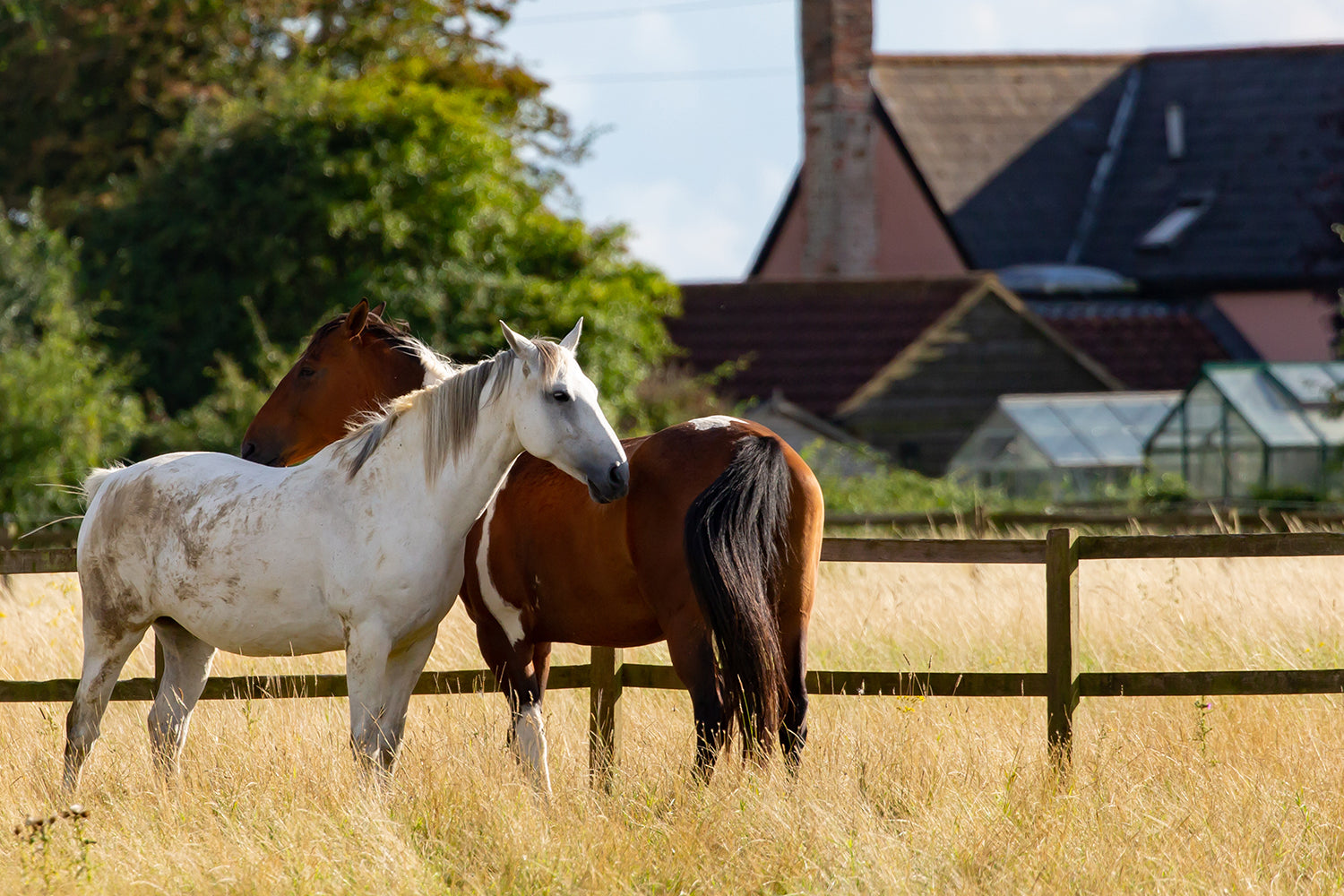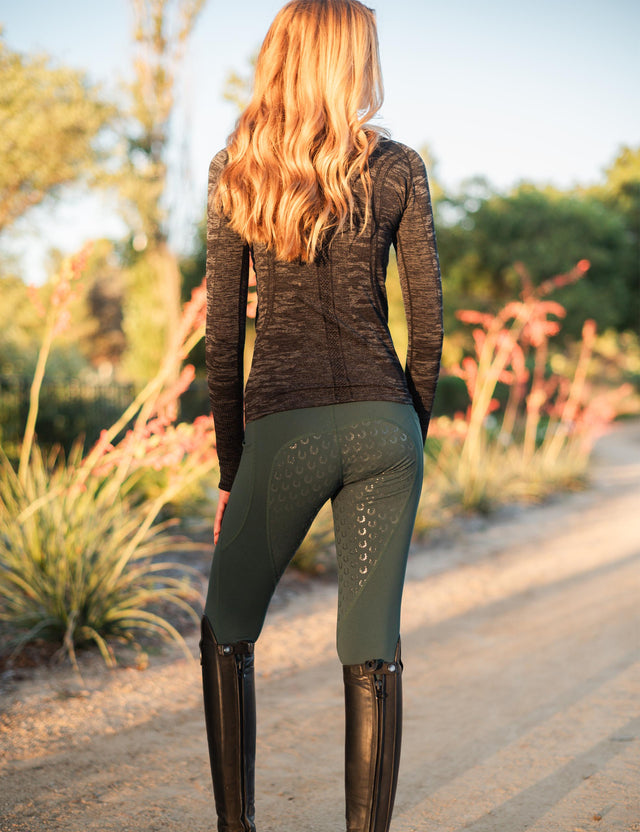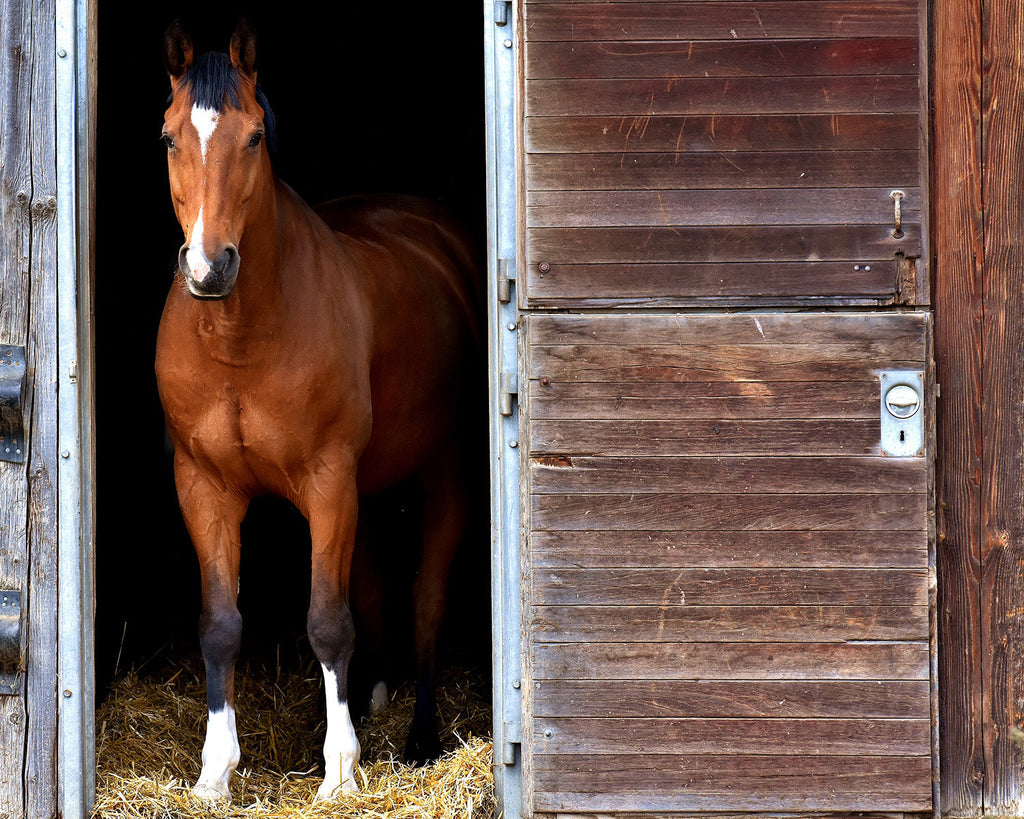Temperaturbereich, den Pferde vertragen: Was jeder Pferdebesitzer wissen muss

Pferde sind unglaublich widerstandsfähige Tiere, die sich an eine Vielzahl von Umweltbedingungen angepasst haben. Wie bei allen Tieren sind ihre Temperaturschwankungen jedoch begrenzt. Das Wissen um den Temperaturbereich, den Pferde vertragen, ist entscheidend für ihre Gesundheit, ihr Wohlbefinden und ihre Sicherheit das ganze Jahr über, insbesondere bei extremen Wetterbedingungen.
Idealer Temperaturbereich für Pferde
Pferde gedeihen im Allgemeinen bei Temperaturen zwischen 5 °C und 15 °C . Dies ist ein angenehmer Temperaturbereich, in dem sie weder durch Hitze noch durch Kälte gestresst werden. Pferde sind jedoch anpassungsfähig und können einen größeren Temperaturbereich tolerieren, insbesondere wenn sie an bestimmte Bedingungen gewöhnt sind. Im Folgenden erläutern wir, was Pferde bei Hitze und Kälte aushalten können.
Kältetoleranz
Pferde sind von Natur aus für kaltes Wetter gerüstet, insbesondere wenn sie ein dickes Winterfell haben. Ihre Fähigkeit, niedrigere Temperaturen zu ertragen, hängt von verschiedenen Faktoren ab, darunter Fellzustand, Körperkondition und Zugang zu Unterschlupf. Hier ist eine Übersicht über die Temperaturen, die Pferde aushalten können:
0 °C (32 °F) und darunter :
- Winterfell : Pferde mit dickem, gepflegtem Winterfell fühlen sich bei Temperaturen um den Gefrierpunkt in der Regel wohl, sofern sie vor Wind und Regen geschützt sind. Das Fell isoliert den Körper und hält ihn warm.
- Unterstand : Pferde sollten vor Wind, Nässe und Schnee geschützt werden. Eine trockene, zugfreie Umgebung trägt dazu bei, ihre Körperwärme zu halten.
- Aktivität : Pferde, die aktiv sind und sich bewegen, vertragen kaltes Wetter besser, da Bewegung Wärme erzeugt. Wenn sie jedoch längere Zeit stillstehen, benötigen sie möglicherweise zusätzlichen Schutz, wie Decken oder Zugang zu einer warmen Box.
-5 °C (23 °F) bis -10 °C (14 °F) :
- Anpassung : An kaltes Wetter gewöhnte Pferde vertragen Temperaturen von -5 °C bis -10 °C (23 °F bis 14 °F) in der Regel ohne nennenswerte Beschwerden. Pferde mit dickem Fell können sogar noch niedrigere Temperaturen vertragen, sofern sie Zugang zu Unterschlupf, Futter und frischem Wasser haben.
- Decken : Pferde, die geschoren wurden (oder solche mit dünnerem Fell), benötigen möglicherweise Decken, um ihre Körperwärme zu halten. Auch ältere Pferde, Fohlen oder Pferde in schlechter Verfassung benötigen möglicherweise zusätzliche Wärme.
- Beobachten : Achten Sie auf Anzeichen von Kältestress oder Unwohlsein, wie etwa Zittern oder Nahrungsverweigerung.
Unter -10 °C (14 °F) :
- Besondere Vorsicht : Bei Temperaturen unter -10 °C fällt es Pferden oft schwer, warm zu bleiben, insbesondere wenn ihr Fell nass ist oder sie starkem Wind ausgesetzt sind. Achten Sie besonders darauf, dass sie trocken und geschützt bleiben. Pferde ohne ausreichenden Schutz können Erfrierungen, Unterkühlung und andere kältebedingte Probleme erleiden.
- Fütterung : Bei extrem kaltem Wetter verbrennen Pferde mehr Kalorien, um ihre Körpertemperatur aufrechtzuerhalten. Daher ist eine erhöhte Futteraufnahme (Heu) notwendig, um zusätzliche Energie zu liefern.
Hitzetoleranz
Pferde kommen auch mit wärmeren Temperaturen zurecht, ihre Fähigkeit, kühl zu bleiben, hängt jedoch von verschiedenen Faktoren ab, darunter Fellart, Aktivitätsniveau und Zugang zu Schatten und Wasser. Anders als bei kaltem Wetter besteht bei Pferden bei Hitze ein höheres Risiko der Überhitzung, insbesondere wenn sie hart arbeiten oder nicht über ausreichende Kühlmechanismen verfügen.
20 °C (68 °F) bis 30 °C (86 °F) :
- Angenehme Temperatur : Pferde vertragen Temperaturen in diesem Bereich im Allgemeinen gut, sofern sie Zugang zu ausreichend frischem Wasser und Schatten haben. Dies ist der typische Temperaturbereich für eine angenehme Reitumgebung.
- Belastung : In diesem Bereich können Pferde mäßig trainieren, ohne dass die Gefahr einer Überhitzung besteht. Achten Sie jedoch weiterhin auf Anzeichen von Hitzestress, insbesondere bei intensiven Trainingseinheiten.
30 °C (86 °F) bis 35 °C (95 °F) :
- Hitzestresspotenzial : Pferde können diese Temperaturen gut vertragen, wenn sie nicht zu viel arbeiten, benötigen aber ständig Zugang zu frischem, kühlem Wasser und Schatten. Reiten oder intensive körperliche Betätigung in diesem Bereich kann das Risiko von Hitzestress, Dehydrierung und Erschöpfung erhöhen.
- Kühlmechanismen : Pferde benötigen zusätzliche Kühlmaßnahmen wie Ventilatoren, Kühltücher und Zugang zu kühlem Wasser zum Baden. Achten Sie darauf, dass sie nicht überanstrengt werden, und sorgen Sie für regelmäßige Pausen im Schatten.
Über 35 °C (95 °F) :
- Hitzestressrisiko : Bei Temperaturen über 35 °C (95 °F) besteht für Pferde ein erhebliches Risiko für Hitzeerschöpfung, Dehydrierung und Hitzschlag, insbesondere wenn sie während der Stoßzeiten arbeiten oder reiten. Unter diesen Bedingungen sollten Pferde nicht bewegt werden, und es müssen zusätzliche Vorkehrungen getroffen werden, um sie kühl zu halten.
- Schatten und Wasser : Pferde benötigen unter diesen Bedingungen ständigen Zugang zu frischem Wasser, viel Schatten und eine Kühlung (z. B. durch Zerstäuber oder Ventilatoren). Wenn Sie sie bewegen müssen, tun Sie dies am frühen Morgen oder späten Abend, wenn die Temperaturen niedriger sind.
Faktoren, die die Kälte- und Hitzetoleranz beeinflussen
Obwohl Pferde von Natur aus anpassungsfähig sind, können verschiedene Faktoren beeinflussen, wie gut sie mit extremen Temperaturen zurechtkommen:
-
Fellart : Pferde mit dickerem Winterfell sind besser für kaltes Wetter geeignet, während Pferde mit dünnerem Fell (z. B. geschorene Pferde für Wettkämpfe oder Rennen) im Winter Decken oder zusätzliche Pflege benötigen. Im Sommer sind Pferde mit dünnerem Fell besser für heißes Klima geeignet.
-
Körperliche Verfassung : Pferde mit mehr Körperfett und Muskelmasse sind im Allgemeinen besser isoliert und vertragen sowohl Hitze als auch Kälte besser. Pferde mit Untergewicht oder schlechter Kondition haben bei extremen Wetterbedingungen möglicherweise Schwierigkeiten, ihre Körpertemperatur zu halten.
-
Alter : Ältere Pferde und Fohlen haben tendenziell größere Schwierigkeiten mit extremen Temperaturen. Ältere Pferde können ihre Körpertemperatur möglicherweise nicht mehr so gut regulieren und benötigen daher möglicherweise mehr Schutz vor Hitze und Kälte.
-
Aktivitätsniveau : Pferde, die aktiv arbeiten oder trainieren, haben einen erhöhten Stoffwechsel, der ihnen hilft, bei kaltem Wetter warm zu bleiben oder sich bei heißem Wetter abzukühlen. Überanstrengung bei extremer Hitze oder Kälte kann jedoch zu ernsthaften Gesundheitsproblemen führen. Daher ist es wichtig, ihr Aktivitätsniveau zu überwachen.
-
Akklimatisierung : Pferde, die sich allmählich an ein bestimmtes Klima (z. B. kalte Winter oder heiße Sommer) angepasst haben, können diese Bedingungen im Allgemeinen besser tolerieren. Plötzliche Temperaturschwankungen können hingegen Stress verursachen.
Fazit: So schützen Sie Ihr Pferd bei extremen Temperaturen
Pferde sind robuste und widerstandsfähige Tiere, die mit der richtigen Pflege und Haltung mit unterschiedlichsten Temperaturen zurechtkommen. Obwohl sie kaltes Wetter gut vertragen, insbesondere wenn ihr Fell dick ist, ist es wichtig, ihnen bei extremer Kälte Schutz, Decken und zusätzliches Futter zu bieten. Bei heißem Wetter ist der Zugang zu Schatten, Wasser und Kühlsystemen unerlässlich, um Hitzestress vorzubeugen.









Einen Kommentar hinterlassen